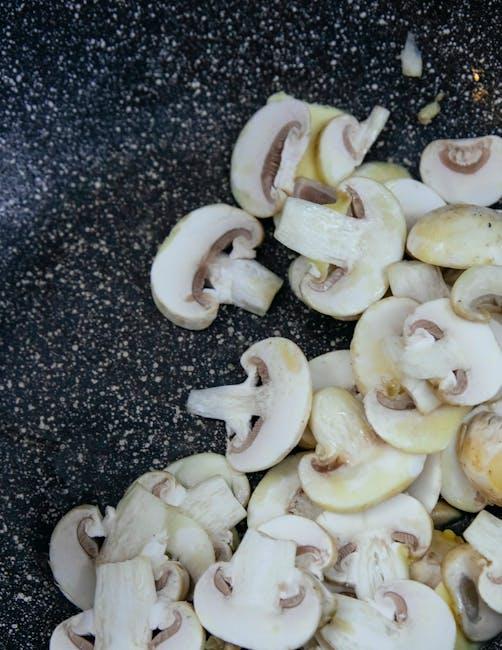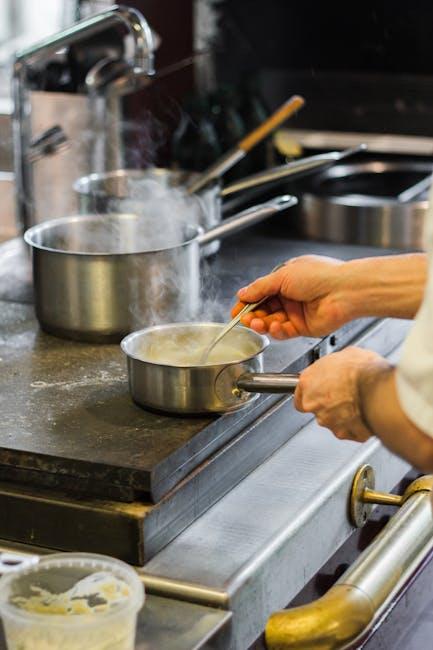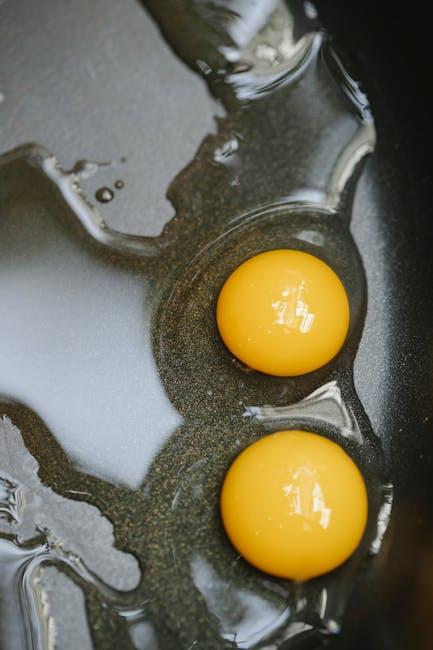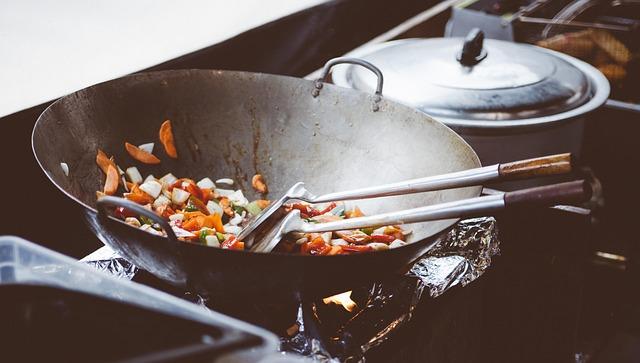In the heart of every kitchen, two formidable contenders vie for supremacy: the nonstick pan and the stainless steel skillet. Each brings to the table its own distinct set of advantages and challenges, shaping the way we approach daily cooking. Whether you’re a seasoned chef or an enthusiastic home cook, the choice between these two kitchen staples can significantly impact your culinary adventures. As we explore the attributes, benefits, and potential drawbacks of nonstick and stainless steel pans, we aim to answer a pressing question that many home cooks grapple with: which one reigns supreme in the realm of everyday cooking? Join us as we delve into the features that make each type of pan unique and discover how to choose the right one for your kitchen needs.
Understanding Nonstick Pans and Their Practical Benefits
Nonstick pans have revolutionized the way we approach daily cooking. Their unique surface ensures that food slides off with ease, which not only minimizes the need for excessive oil or butter but also makes cleanup a breeze. This functionality benefits both novice cooks and experienced chefs by saving time and reducing the worry of food sticking, burning, or falling apart. Another advantageous aspect of nonstick pans is their ability to distribute heat evenly, creating an ideal cooking environment for delicate foods such as eggs and pancakes, which can often be challenging to prepare in traditional cookware.
Moreover, when considering their long-term use, nonstick pans require less maintenance compared to stainless steel options. They are generally lighter, offer a more forgiving cooking surface, and are often dishwasher safe, making them convenient for daily use. However, it’s important to choose high-quality nonstick cookware that is free from harmful chemicals to ensure safety while cooking. Below are some practical benefits that showcase why nonstick pans are favored in many kitchens:
- Easy Food Release: Effortlessly slide food onto plates.
- Healthier Cooking: Less need for cooking fats.
- Quick Cleanup: Reduces scrubbing time after meals.
- Versatility: Suitable for various cooking methods.

Exploring the Versatility and Durability of Stainless Steel Cookware
Stainless steel cookware has carved its niche in kitchens around the world, prized for its durability and versatility. Unlike nonstick pans, stainless steel can withstand high heat, making it ideal for searing meats and creating fond for sauces. Its non-reactive nature means it won’t interact with acidic foods, allowing for a fuller flavor profile in dishes like tomato-based sauces or citrus-infused sautés. Furthermore, stainless steel cookware comes in various designs, from polished finishes to brushed textures, providing both aesthetic appeal and functionality.
Maintenance of stainless steel is straightforward, thanks to its resilience against scratches and stains. With a few simple precautions, you can keep your cookware looking new:
- Always preheat: to ensure even cooking and minimize sticking.
- Use proper utensils: wooden or silicone tools prevent damage.
- Deglaze for easier cleaning: after cooking, use a splash of wine or broth to lift stuck bits.
Additionally, its ability to be dishwasher safe and often oven safe up to high temperatures adds to its convenience.

Health Considerations and Safety Features in Cooking Materials
When selecting cooking materials, it’s crucial to consider both health implications and safety features. Nonstick pans are known for their convenience and ease of use, but they often raise concerns regarding the chemicals used in their coatings. Overheating nonstick cookware can lead to the release of toxic fumes, which may pose health risks. Moreover, scratches on the surface can flake off harmful particles into your food. On the other hand, stainless steel pans are generally regarded as safer. They do not release harmful chemicals and are resistant to corrosion and staining, making them a durable choice for daily cooking.
Another important factor is how each material reacts to heat. Nonstick pans can typically withstand lower temperatures and require less oil, promoting healthier cooking methods. However, they may not be suitable for high-heat cooking techniques, which can compromise their integrity. In contrast, stainless steel pans are great for searing and browning food, offering enhanced flavor profiles. Below is a comparison of key health and safety features:
| Feature | Nonstick Pans | Stainless Steel Pans |
|---|---|---|
| Chemical Safety | Risk of toxic fumes | Generally safe |
| Temperature Tolerance | Lower heat | High heat |
| Durability | Less durable, prone to scratching | Highly durable and long-lasting |
| Cooking Methods | Great for low-fat cooking | Ideal for browning and searing |

Choosing the Right Pan for Your Culinary Style and Needs
When it comes to selecting the perfect pan for your kitchen, understanding your cooking habits and preferences is crucial. Nonstick pans are celebrated for their ability to prevent food from sticking, making them ideal for cooking delicate items like eggs and pancakes. Their ease of cleaning is another notable benefit, as just a simple wipe and a rinse can often do the trick. However, considerations like:
- Durability: Nonstick coatings can wear off over time.
- Heat tolerance: Some can only handle low to medium heat without damage.
- Cooking methods: Not suitable for high-heat searing or browning.
On the other hand, stainless steel pans are renowned for their longevity and robustness. They provide excellent heat conductivity, allowing for more even cooking and browning, which is essential for dishes that require precise temperature control. While food might occasionally stick in stainless steel cookware, using the right techniques can prevent this issue. Focus on factors such as:
- Versatility: Suitable for a wide range of cooking methods.
- Maintenance: Requires more effort to clean thoroughly.
- Impact on flavor: They can enhance the taste of certain foods.
In Retrospect
As our culinary journey comes to an end, the debate between nonstick and stainless steel pans remains as spirited as ever. Each has its own advantages, tailored to different cooking styles and preferences. Nonstick pans offer the allure of effortless food release and easy cleanup, making them perfect for those busy weeknight dinners. On the other hand, stainless steel cookware brings durability and versatility to the table, ideal for searing meats and creating delectable sauces.
Ultimately, the choice between these two kitchen staples hinges on your cooking habits and the dishes you love to prepare. Armed with the insights we’ve explored, you can confidently navigate the cookware aisle and choose the option that best aligns with your culinary adventures. Whether you lean toward the convenience of nonstick or the resilience of stainless steel, remember that the heart of cooking lies in the joy of experimentation. Happy cooking!




